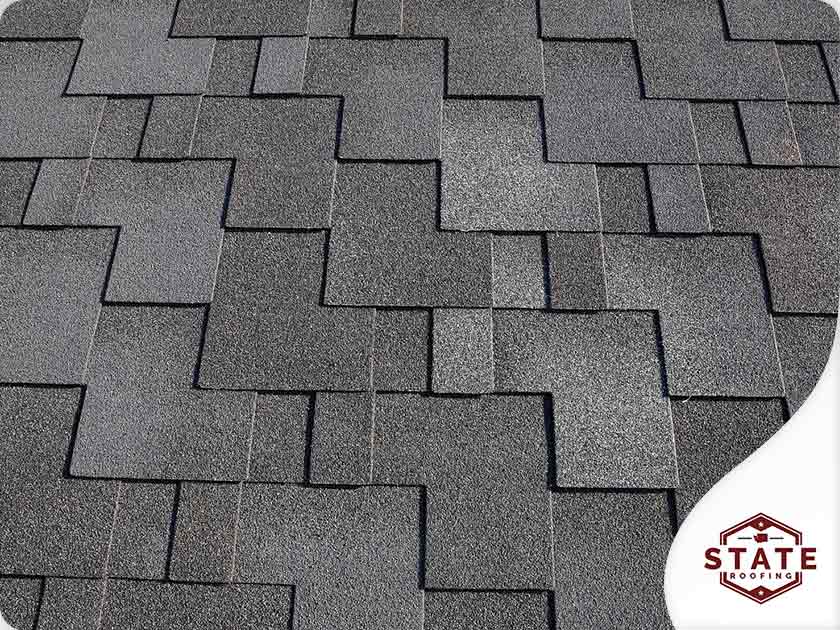Asphalt shingle roofs typically last up to 30 years. Keeping yourself up to date with your roof’s age can help you get the most years out of it, anticipate roofing problems related to age, and prepare well ahead of its eventual replacement. In today’s post, residential roof installation company State Roofing shares an overview of an asphalt shingle’s life cycle.

Manufacturing and Installation
The asphalt shingle life cycle begins after manufacture. They’re shipped in sealed packaging to minimize exposure to oxygen and moisture until they’re ready to install. One advantage of hiring credentialed roofers like us is we order our asphalt shingles straight from the factory. This ensures consistency across the finished roof, as in all the shingles would age at the same rate.
The first few months after roofing installation are the curing period. During this time, the asphalt shingles develop a durable outer layer as the adhesives and shingle backing form a bond. Loose granules may come off the roof and into the gutters; this is normal. The roof becomes stable after this curing period.
The First 10 Years
In the roofing industry, the first ten years after installation is known as the “incipient stage”. This is considered as the period when the roof is in its prime condition. This is also the period when the roof will be exposed to multiple seasonal cycles, which should put both the roofing system and the roofer’s workmanship to the test. A standard asphalt shingle warranty should cover this period, if not beyond. Homeowners are advised to keep up with scheduled roofing maintenance around this time to ensure warranty coverage.
Later Years
Expect to see signs of aging after the incipient stage. You’re more likely to see signs of prolonged exposure to the elements, such as granule loss and stress cracks, particularly at the roof edge. Roof inspections—which are conducted between scheduled roofing maintenance—are important during this time, as timely repairs will help prolong the roof’s life span. If the roof is starting to approach the end of its service life, signs such as cupping, curling, and “bald” shingles will become more visible. By this time, you will need to look into getting a new roof.
State Roofing is your leading provider of asphalt shingle and metal roofing systems. Give us a call at (360) 794-7164. You can also fill out our contact form to schedule an appointment. We serve customers in Seattle, WA, and surrounding communities.








